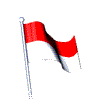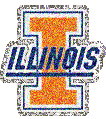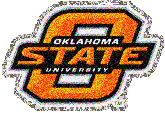 Facebook (Mark.E.Z)
Facebook (Mark.E.Z)Awalnya hanya sebuah keisengan. Berkat tangan dingin Mark Elliot Zuckerberg (kreaturnya), Facebook pun kemudian berkembang menjadi sebuah usaha yang patut diperhitungkan. Kini omzetnya mencapai ratusan juta dolar. Face book kini tengah menjadi tren dunia. Daya pikat website ini memang begitu dahsyat. Pamornya mulai bersinar, bahkan sejak pertama kali muncul 5 tahun lalu. Tak pelak, popularitasnya langsung mengalahkan situs serupa yang sudah lebih dulu ngepop layaknya Friendster dan Multiply.
Hingga akhir tahun 2007, para penggunanya sudah mencapai 60 juta org. Tak salah, bila ComScore Inc. pun layak memposisikan facebook sebagai salah satu situs terpopuler di dunia sepanjang 2007.
Tak hanya popularitas yang akan dinikmati Mark Elliot Zuckerberg, pemilik sekaligus Chief Executive Officer (CEO) Facebook. Dari sisi bisnis pun, Facebook patut dibanggakan. Bagaimana tidak, atas semua pencapaian itu, otomatis mengangkat situs ini menjadi media yang dinilai layak untuk beriklan. Lihat saja omzet yang dipetik pengelolanya sepanjang 2006, skalanya terbilang mencengangkan: US$ 100 juta. Kabarnya, dari pendapatan sebesar itu, sekitar Rp. 6,6 triliun masuk ke kantong pribadi sang pemilik. Sungguh, kekayaan yang luar biasa besar buat ukuran seorang Mark yang saat ini baru berusia 24 tahun.
Mark, bisa dibilang, tergolong eksekutif muda yang unik. Ia begitu mengidolakan Bill Gates. Bill bahkan banyak mempengaruhi perjalanan hidupnya. Salah satu yang tergolong ekstrim, karena kegilaannya terhadap komputer, Mark tak ragu memutuskan kuliahnya di Harvard University (langkah serupa pernah dilakukan sang idola). “Karena Bill Gates-lah yang menginspirasi saya untuk berhenti kuliah”, ujar pria yang sempat belajar selama dua tahun di universitas itu.
Facebook sendiri, sebenarnya judul dari sebuah buku yang memuat daftar nama seluruh mahasiswa dan dosen di Harvard. Bagi setiap warga perguruan ini, wajib hukumnya memiliki buku itu. Dari situlah mulanya yang mendorong Mark menggagas sebuah komunitas baru di dunia maya. Ide awalnya, kata Mark, ia hanya ingin membuat website yang keren dan disenangi teman-temannya.
Kala peluncuran perdananya, website ini hanya diperkenalkan di lingkup almamater. Karena memperoleh respons yang cukup bagus, kemudian dikembangkan agar bisa diakses oleh para siswa SMA di 30 sekolah yang ada di sekitar New York. Di luar dugaan, responsnya lebih dahsyat. Dan kepopulerannya terus menggema dari mulut ke mulut. Kini dalam sehari, Facebook rata-rata dikunjungi oleh lebih dari 1 juta orang.
Ada sejumlah daya tarik yang dimiliki Facebook, sehingga begitu digandrungi. Di antaranya, adanya aturan (tak tertulis) bagi mereka yang ingin masuk ke komunitas ini yang dinilai berbeda dengan website serupa lainnya. Yakni, mereka harus jujur memberikan data diri(email address). Nah, yang melanggar, account-nya akan diblokir.
Aplikasi yang ditawarkan Facebook memang sangat mengasyikkan. Salah satunya yang terpopuler adalah superPoke. Lewat aplikasi ini, menariknya, para netter bisa saling serang dengan menggunakan gambar-gambar animasi yang lucu. Website ini juga memungkinkan para anggotanya bisa membuat kuis interaktif, polling, atau simulasi pemilu. Situs ini juga memiliki kapasitas memori terbilang sangat besar, sehingga setiap pekannya bisa menampung sekitar 60 juta keping foto.
Mulanya tiada yang menduga, termasuk Mark sendiri, jika Facebook bisa berkembang menjadi sebuah usaha yang menjanjikan. Apa boleh buat, realitas yang berkembang bicara lain. Bahkan situs ini kini layak digolongkan sebagai wahana usaha yang patut diperhitungkan. Untuk menjalankan bisnisnya itu, Mark juga dibantu oleh tiga teman sebayanya. Seiring dengan perkembangan bisnisnya, kini Facebook telah menempati gedung sendiri di kawasan Palo Alto, California, yang mampu menampung sekitar 350 karyawan (sebagian besarnya para pemrogram profesional). Gedung ini, uniknya, tak lain asrama mahasisiwa tempat tinggal Mark ketika kuliah.
Di kalangan teman kulian dan dosen, sebenarnya Mark dikenal sebagai anak cerdas kebanyakan. Bila ada yang menonjol, adalah kegilaannya terhadap komputer. Ia juga dikenal sebagai anak bengal yang kerap mengganggu situs resmi yang dikelola Harvard. Suatu waktu (2003) ia pernah mengecoh kalangan civitas akademi ini dengan situs tandingan yang dibuatnya yang berisi polling tentang siapa cewek yang pantas jadi idola di Harvard. Ulah lainnya, ia pernah membuat database Harvard macet, karena dibanjiri kiriman foto koleksinya. Karena perbuatannya itu, ia diadili oleh para petinggi Harvard, dan nyaris dikelurkan dg tdk hormat.
Sejatinya, Mark tak hanya piawai mengotak-atik program komputer. Ia juga berbakat dalam berbisnis. Layaknya seorang CEO, ternyata Mark memiliki kemampuan meyakinkan para mitra bisnisnya. Ketika Facebook baru berjalan 7 bulan, antara lain, nyatanya ia mampu meyakinkan para petinggi PayPal, perusahaan yang bergerak di bidang jasa pengiriman uang, untuk memberinya pinjaman modal sebesar US$ 500 ribu. Tak diduga, hanya dalam waktu 3 bulan, pinjaman itu bisa dilunasi. Pendapatan Facebook hingga Desember 2004 pun sudah mencapai US$ 1 juta.
Setahun kemudian Mark bersama kawan-kawannya mulai menata usahanya lebih serius lagi. Tak sia-sia, ikhtiarnya itu membuahkan hasil, berupa pinjaman berbunga kecil dari Accel Partners sebesar US$ 12,8 juta. Kepercayaan para mitranya pun kian bertambah. Nyatanya, tak lama setelah itu, ada sebuah konsorsium (tiga perusahaan investasi) yang mau memberikan dukungan dana ke Facebook sebesar US$ 25 juta.
Ketenaran Facebook terus berlanjut. Hingga tahun lalu, tak kurang dari manajemen Yahoo pun tertarik membeli sebagian sahamnya. Hanya untuk 5% saham Facebook, mereka berani menawar US$ 1 milliar. Edannya, peluang itu ditolak mentah-mentah oleh Mark. Secara diplomatis ia menampik tawaran Yahoo dengan mengatakan bahwa saat itu uang baginya bukanlah segala-galanya. Akhirnya, idealisme Mark luluh juga. Nyatanya, ia tak menolak tawaran yang dilayangkan oleh Microsoft. Mark pun dengan ikhlas melepas 1,6% sahamnya-senilai US$ 240 juta – buat perusahaan yang dimiliki oleh idolanya itu.
















